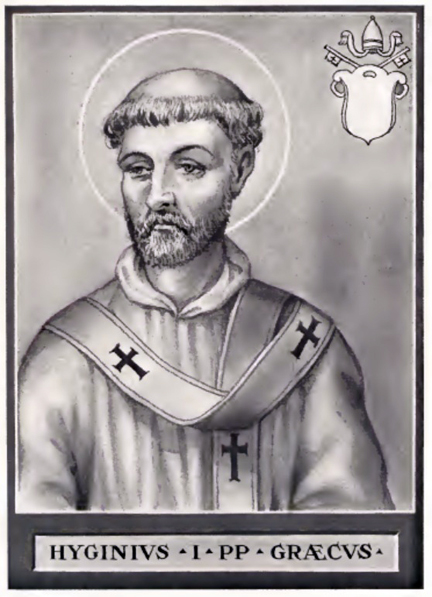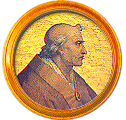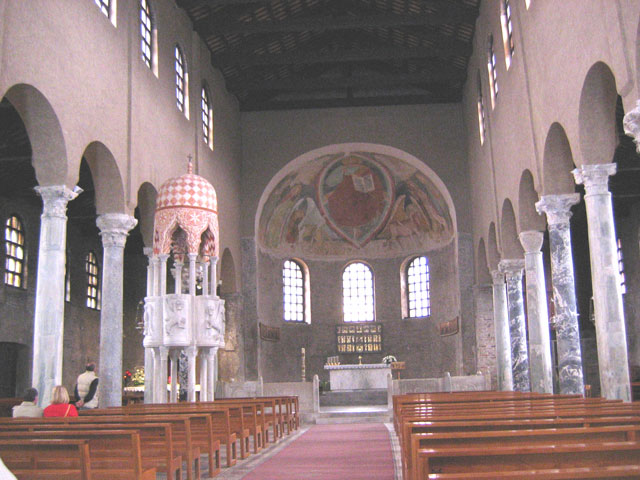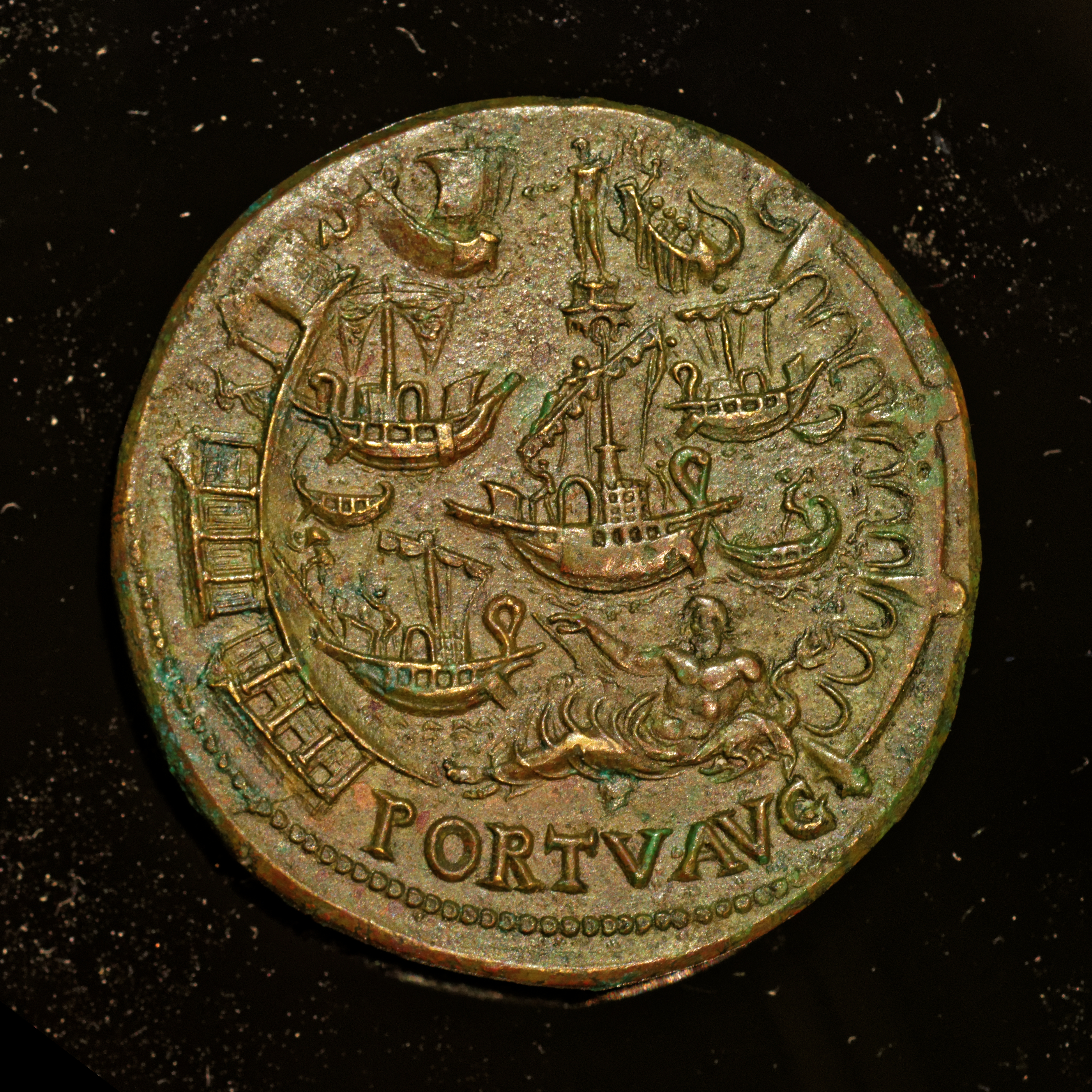|
Pope Theodore II (Catholic)
Pope Theodore II ( la, Theodorus II; 840 – December 897) was the bishop of Rome and ruler of the Papal States for twenty days in December 897. His short reign occurred during a period of partisan strife in the Catholic Church, which was entangled with a period of violence and disorder in central Italy. His main act as pope was to annul the recent Cadaver Synod, therefore reinstating the acts and ordinations of Pope Formosus, which had themselves been annulled by Pope Stephen VI. He also had the body of Formosus recovered from the river Tiber and reburied with honour. He died in office in late December 897. Background Little is known of Theodore's background; he is recorded as being born a Roman, and the son of Photios. His brother Theodosius (or Theosius) was also a bishop.Mann (1902), pp. 88–90.Kelly, Walsh (2010), p. 115. Theodore was ordained as a priest by Pope Stephen V. In January 897, Pope Stephen VI held what is known as the Cadaver Synod. Because his predecessor ... [...More Info...] [...Related Items...] OR: [Wikipedia] [Google] [Baidu] |
Bishop Of Rome
A bishop is an ordained clergy member who is entrusted with a position of authority and oversight in a religious institution. In Christianity, bishops are normally responsible for the governance of dioceses. The role or office of bishop is called episcopacy. Organizationally, several Christian denominations utilize ecclesiastical structures that call for the position of bishops, while other denominations have dispensed with this office, seeing it as a symbol of power. Bishops have also exercised political authority. Traditionally, bishops claim apostolic succession, a direct historical lineage dating back to the original Twelve Apostles or Saint Paul. The bishops are by doctrine understood as those who possess the full priesthood given by Jesus Christ, and therefore may ordain other clergy, including other bishops. A person ordained as a deacon, priest (i.e. presbyter), and then bishop is understood to hold the fullness of the ministerial priesthood, given responsibility b ... [...More Info...] [...Related Items...] OR: [Wikipedia] [Google] [Baidu] |
Translation Of Bishops
Translation is the transfer of a bishop from one episcopal see to another. The word is from the Latin ', meaning "carry across" (another religious meaning of the term is the translation of relics). This can be *From suffragan bishop status to diocesan bishop *From coadjutor bishop to diocesan bishop *From one country's episcopate A bishop is an ordained clergy member who is entrusted with a position of authority and oversight in a religious institution. In Christianity, bishops are normally responsible for the governance of dioceses. The role or office of bishop is ca ... to another *From diocesan bishop to archbishop References Anglicanism Episcopacy in the Catholic Church Christian terminology {{christianity-stub ... [...More Info...] [...Related Items...] OR: [Wikipedia] [Google] [Baidu] |
840 Births
__NOTOC__ Year 840 ( DCCCXL) was a leap year starting on Thursday in the Julian calendar, the 840th year of the Common Era (CE) and Anno Domini (AD) designations, the 840th year of the 1st millennium, the 40th year of the 9th century, and the 1st year of the 840s decade. Events By place Europe * June 20 – Emperor Louis the Pious falls ill and dies at his hunting lodge, on an island in the Rhine, near his imperial palace at Ingelheim, while suppressing a revolt. His eldest son Lothair I succeeds him as Holy Roman Emperor, and tries to seize all the territories of the late Charlemagne. Charles the Bald, 17, becomes king of the Franks, and joins with his half-brother Louis the German, in resisting Lothair. * Vikings from Norway capture Dublin, and establish a Norse kingdom in Ireland. Britain * King Wigstan of Mercia, grandson of former ruler Wiglaf (see 839), declines his kingship in preference of the religious life. He asks his widowed mother, Princess Æl ... [...More Info...] [...Related Items...] OR: [Wikipedia] [Google] [Baidu] |
Greek Popes
This is a list of Greek popes. Most were pope before or during the Byzantine Papacy (537–752). It does not include all the Sicilian and Syrian popes of Greek extraction from that period. Pre-537 *Pope Anacletus (79–92) *Pope Telesphorus (126–137) * Pope Hyginus (138–140) *Pope Eleuterus (174–189) *Pope Anterus (235–236) *Pope Stephen I (254–257) *Pope Sixtus II (257–258) *Pope Dionysius (259–268) *Pope Eusebius (309) *''Antipope Heraclius'' (309 or 310) *Pope Zosimus (417–418) 537–753 *Pope Boniface III (607) *Pope John IV (640-642) *Pope Theodore I (642–649) *Pope Agatho (678–681) *Pope Conon (686-687) *Pope John VI (701–705) *Pope John VII (705–707) *Pope Zachary (741–752) Post-753 *''Antipope John XVI'' (997-998) *''Antipope Alexander V'' (1409–1410) *Pope Innocent VIII (1484–1492), distant partial Greek ancestry *Pope Julius II Pope Julius II ( la, Iulius II; it, Giulio II; born Giuliano della Rovere; 5 December 144321 February 151 ... [...More Info...] [...Related Items...] OR: [Wikipedia] [Google] [Baidu] |
Pope
The pope ( la, papa, from el, πάππας, translit=pappas, 'father'), also known as supreme pontiff ( or ), Roman pontiff () or sovereign pontiff, is the bishop of Rome (or historically the patriarch of Rome), head of the worldwide Catholic Church, and has also served as the head of state or sovereign of the Papal States and later the Vatican City State since the eighth century. From a Catholic viewpoint, the primacy of the bishop of Rome is largely derived from his role as the apostolic successor to Saint Peter, to whom primacy was conferred by Jesus, who gave Peter the Keys of Heaven and the powers of "binding and loosing", naming him as the "rock" upon which the Church would be built. The current pope is Francis, who was elected on 13 March 2013. While his office is called the papacy, the jurisdiction of the episcopal see is called the Holy See. It is the Holy See that is the sovereign entity by international law headquartered in the distinctively independent Vatic ... [...More Info...] [...Related Items...] OR: [Wikipedia] [Google] [Baidu] |
Cambridge University Press
Cambridge University Press is the university press of the University of Cambridge. Granted letters patent by Henry VIII of England, King Henry VIII in 1534, it is the oldest university press A university press is an academic publishing house specializing in monographs and scholarly journals. Most are nonprofit organizations and an integral component of a large research university. They publish work that has been reviewed by schola ... in the world. It is also the King's Printer. Cambridge University Press is a department of the University of Cambridge and is both an academic and educational publisher. It became part of Cambridge University Press & Assessment, following a merger with Cambridge Assessment in 2021. With a global sales presence, publishing hubs, and offices in more than 40 Country, countries, it publishes over 50,000 titles by authors from over 100 countries. Its publishing includes more than 380 academic journals, monographs, reference works, school and uni ... [...More Info...] [...Related Items...] OR: [Wikipedia] [Google] [Baidu] |
Pope Sergius III
Pope Sergius III (c. 860 − 14 April 911) was the bishop of Rome and nominal ruler of the Papal States from 29 January 904 to his death. He was pope during a period of violence and disorder in central Italy, when warring aristocratic factions sought to use the material and military resources of the papacy. At the behest of Theophylact I of Tusculum, Sergius seized the papal throne from Antipope Christopher, who in turn had deposed Pope Leo V. Sergius' reign was subsequently marked by Theophylact's influence. As pope, Sergius continued many ecclesiastical controversies of his predecessors, including conflict over Pope Formosus' legacy, annulling all ordinations made by the late pope, and the ''filioque'' controversy with eastern patriarchs. His pontificate was similarly marked by temporal conflicts, with Sergius' refusal to crown Berengar I of Italy as Holy Roman Emperor, and his support of Byzantine Emperor Leo VI the Wise's fourth marriage. Sergius also saw the restoration of th ... [...More Info...] [...Related Items...] OR: [Wikipedia] [Google] [Baidu] |
List Of Non-extant Papal Tombs
This is a list of non-extant papal tombs, which includes tombs not included on the list of extant papal tombs. Information about these tombs is generally incomplete and uncertain. Chronologically, the main locations of destroyed or unknown papal tombs have been: the obscure tombs of the first two centuries of popes near Saint Peter, the repeated waves of translations from the Catacombs of Rome, the demolition of the papal tombs in Old St. Peter's Basilica, and the 1306 and 1361 fires in the Archbasilica of Saint John Lateran. Papal tombs have also been destroyed by other instances of fire, remodeling, and war (most recently, World War II). Others are unknown due to creative or geographically remote methods of martyrdom, or—in the case of Pope Clement I—both. Burial in churches outside the Aurelian Walls of Rome (Italian: ''fuori le Mura'')—in the basilicas of Paul or Lorenzo—have not generally survived. Main locations The main locations of destroyed or lost papal tom ... [...More Info...] [...Related Items...] OR: [Wikipedia] [Google] [Baidu] |
Patriarch Of Grado
This is a list of the Patriarchs of Grado (north-eastern Italy). ''''. David M. Cheney. Retrieved September 25, 2016"Patriarchal See of Grado" ''GCatholic.org''. Gabriel Chow. Retrieved September 25, 2016 The patriarchate came into being when the schismatic , [...More Info...] [...Related Items...] OR: [Wikipedia] [Google] [Baidu] |
Privilege (canon Law)
Privilege in the canon law of the Roman Catholic Church is the legal concept whereby someone is exempt from the ordinary operation of the law over time for some specific purpose. Definition Papal privileges resembled dispensations, since both involved exceptions to the ordinary operations of the law. But whereas "dispensations exempt dsome person or group from legal obligations binding on the rest of the population or class to which they belong," “ ivileges bestowed a positive favour not generally enjoyed by most people." "Thus licences to teach or to practise law or medicine, for example," were "legal privileges, since they confer edupon recipients the right to perform certain functions for pay, which the rest of the population asnot ermitted to exercise. Privileges differed from dispensations in that dispensations were for one time, while a privilege was lasting. Yet, such licenses might also involve what should properly be termed dispensation, if they waived the canon la ... [...More Info...] [...Related Items...] OR: [Wikipedia] [Google] [Baidu] |
Old St
Old or OLD may refer to: Places *Old, Baranya, Hungary *Old, Northamptonshire, England *Old Street station, a railway and tube station in London (station code OLD) *OLD, IATA code for Old Town Municipal Airport and Seaplane Base, Old Town, Maine, United States People *Old (surname) Music *OLD (band), a grindcore/industrial metal group * ''Old'' (Danny Brown album), a 2013 album by Danny Brown * ''Old'' (Starflyer 59 album), a 2003 album by Starflyer 59 * "Old" (song), a 1995 song by Machine Head *''Old LP'', a 2019 album by That Dog Other uses * ''Old'' (film), a 2021 American thriller film *''Oxford Latin Dictionary'' *Online dating *Over-Locknut Distance (or Dimension), a measurement of a bicycle wheel and frame *Old age See also *List of people known as the Old * * *Olde, a list of people with the surname *Olds (other) Olds may refer to: People * The olds, a jocular and irreverent online nickname for older adults * Bert Olds (1891–1953), Australian rules ... [...More Info...] [...Related Items...] OR: [Wikipedia] [Google] [Baidu] |
Portus
Portus was a large artificial harbour of Ancient Rome. Sited on the north bank of the north mouth of the Tiber, on the Tyrrhenian coast, it was established by Claudius and enlarged by Trajan to supplement the nearby port of Ostia. The archaeological remains of the harbour are near the modern-day Italian village of Porto within the Comune of Fiumicino, just south of Rome in Lazio (ancient Latium). Ancient Portus Claudian phase Rome's original harbour was Ostia. Claudius constructed the first harbour on the Portus site, north of Ostia, enclosing an area of 250 hectares (617 acres), with two long curving moles projecting into the sea, and an artificial island, bearing a lighthouse, in the centre of the space between them. The foundation of this lighthouse was provided by filling one of the massive obelisk ships, used to transport an obelisk from Egypt to adorn the spina of Vatican Circus, built during the reign of Caligula. The harbour thus opened directly to the sea on the ... [...More Info...] [...Related Items...] OR: [Wikipedia] [Google] [Baidu] |








